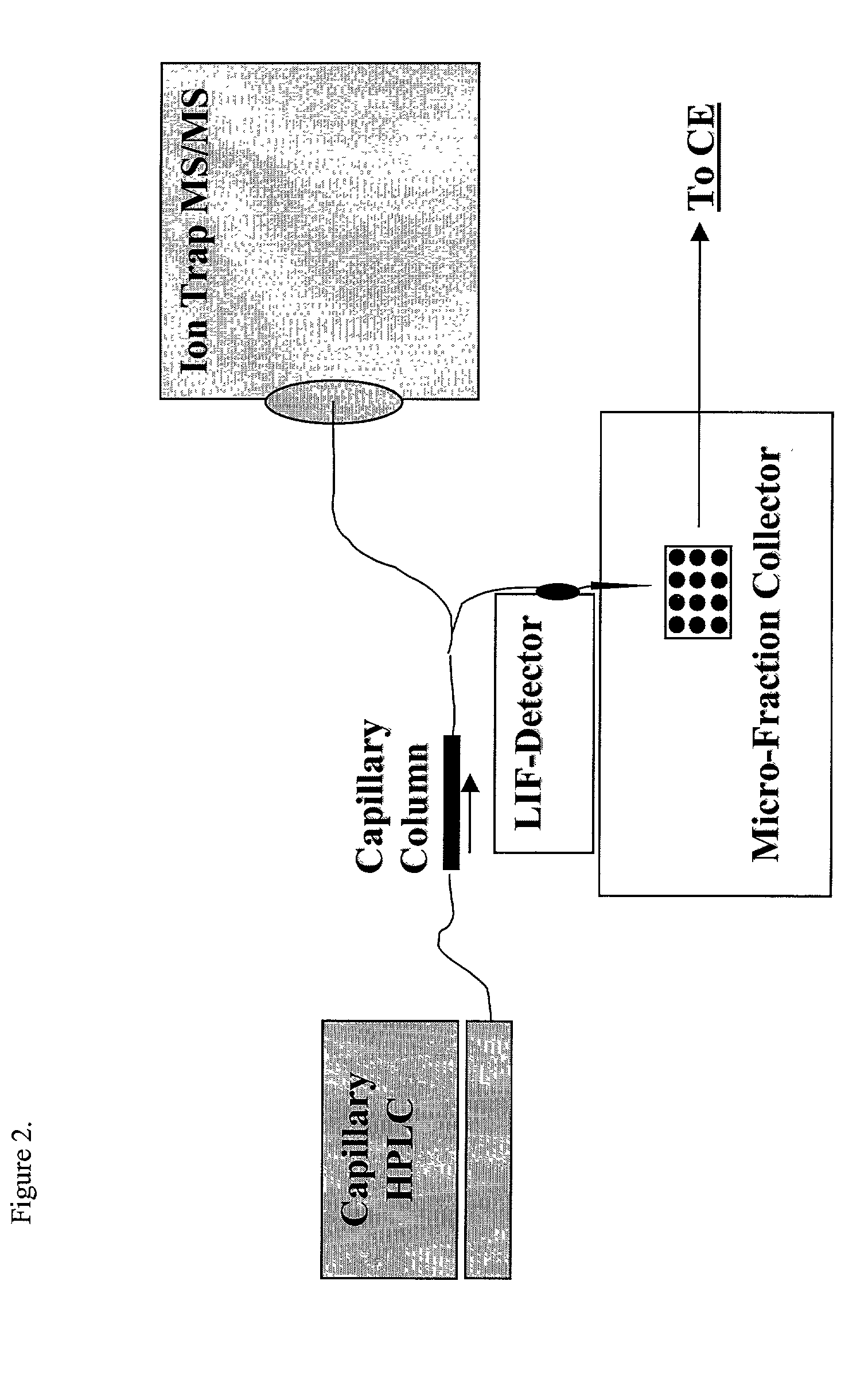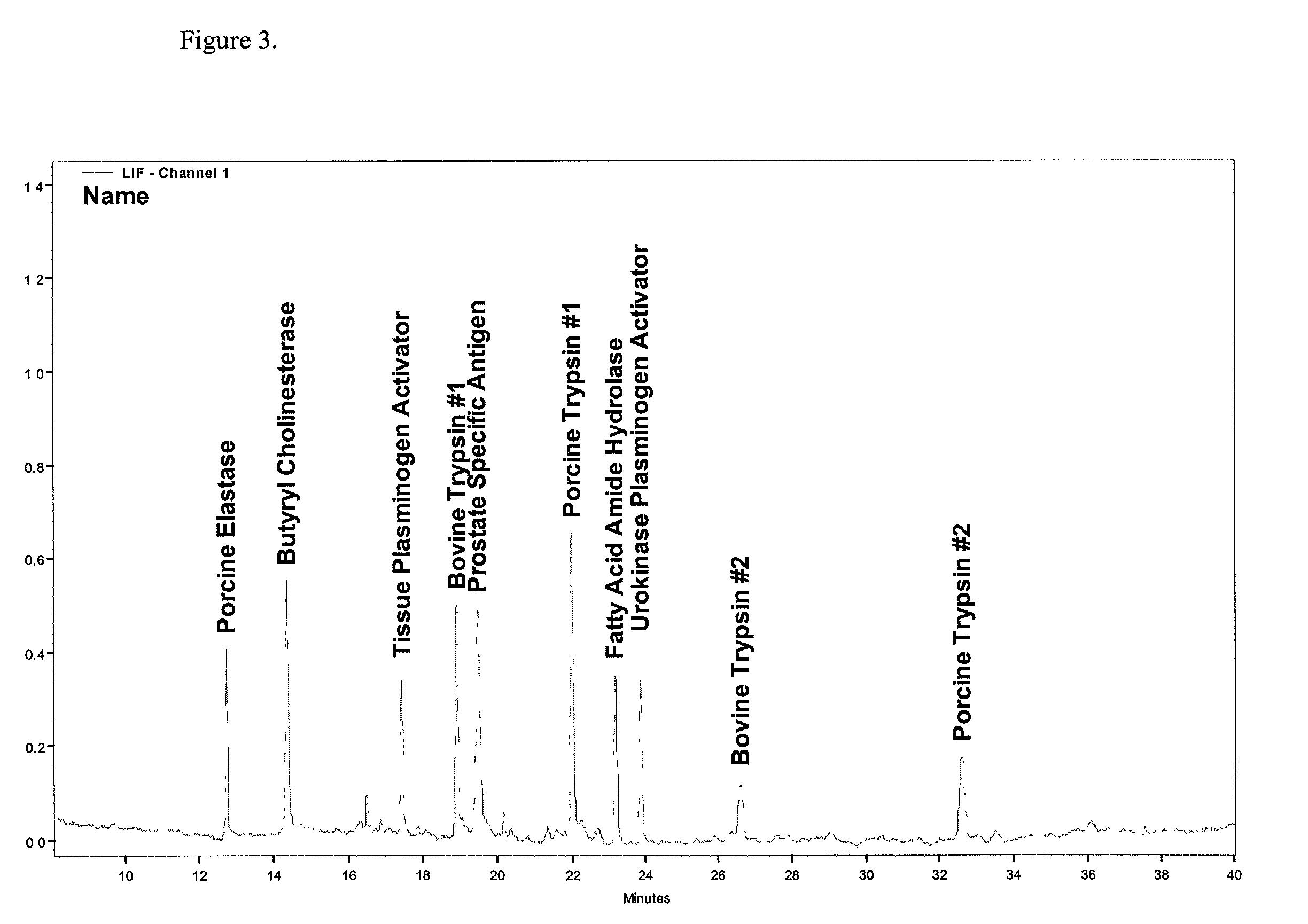Protein profiling platform
a protein profiling and protein technology, applied in the field of complex protein mixture analysis, can solve the problems difficult analysis of complex protein mixture, and complicating data interpretation
- Summary
- Abstract
- Description
- Claims
- Application Information
AI Technical Summary
Benefits of technology
Problems solved by technology
Method used
Image
Examples
example 1
Preparation of FP-PEG-TMR (fluorophosphonate-tetraethyleneglycol-tetramethylrhodamine)
[0117]Compound 1a is the starting material tetraethyleneoxy (3,6,9-oxa-1,11-diolundecane) and compound 1b is the starting material decylene-1,10-diol as depicted in the flow chart in FIG. 1.
[0118]Compound 2. A solution of 1 (3.9 g, 20.0 mmol, 3.0 equiv) in DMF (8.0 mL) was treated with TBDMSCl (1.0 g, 6.64 mmol, 1.0 equiv) and imidazole (0.9 g, 13.3 mmol, 2.0 equiv) and the reaction mixture was stirred for 12 h at room temperature. The reaction mixture was then quenched with saturated aqueous NaHCO3 and partitioned between ethyl acetate (200 mL) and water (200 mL). The organic layer was washed with dried (Na2SO4) and concentrated under reduced pressure. Chromatography (SiO2, 5×15 cm, 50–100% ethyl acetate-hexanes) afforded 2 (1.1 g, 2.0 g theoretical, 55%) as a colorless oil: 1H NMR (CDCl3, 400 MHz) δ 3.8–3.5 (m, 16H, CH2OR), 0.88 (s, 9H, CH3C), 0.0 (s, 6H, CH3Si).
[0119]Compound 3. A solution of 2 ...
example 2
ABP-Labeled Peptide Identification and CE Migration Determination
[0137]A complex protein mixture is labeled with an ABP containing TAMRA as the ligand. The sample is then processed, and digested as in example 1. For peptide identification from a proteome, typically 1–5 mg of total protein is used. Following digestion, 1 / 10th volume of 10% SDS (w / v) is added to the sample and it is heated to 65° C. for 5 min. The sample is then mixed with an equal volume of 2× binding buffer (2% Triton X-100, 1% Tergitol NP40 type, 300 mM NaCl, 2 mM EDTA, 20 mM Tris pH 7.4), before adding 20–100 μL of beads containing anti-TAMRA antibodies. The mixture is rotated at ambient temperature for 1 h. The beads are pelleted by centrifugation and the supernatant removed. The beads are then washed 3 times with 1 mL of 1× binding buffer containing 1% SDS, followed by 3 washes with 50 mM Tris pH 8.0, and 2 washes with deionized water. Captured peptides are eluted from the beads with 2 bead volumes of 50% aceton...
PUM
 Login to View More
Login to View More Abstract
Description
Claims
Application Information
 Login to View More
Login to View More - R&D
- Intellectual Property
- Life Sciences
- Materials
- Tech Scout
- Unparalleled Data Quality
- Higher Quality Content
- 60% Fewer Hallucinations
Browse by: Latest US Patents, China's latest patents, Technical Efficacy Thesaurus, Application Domain, Technology Topic, Popular Technical Reports.
© 2025 PatSnap. All rights reserved.Legal|Privacy policy|Modern Slavery Act Transparency Statement|Sitemap|About US| Contact US: help@patsnap.com



